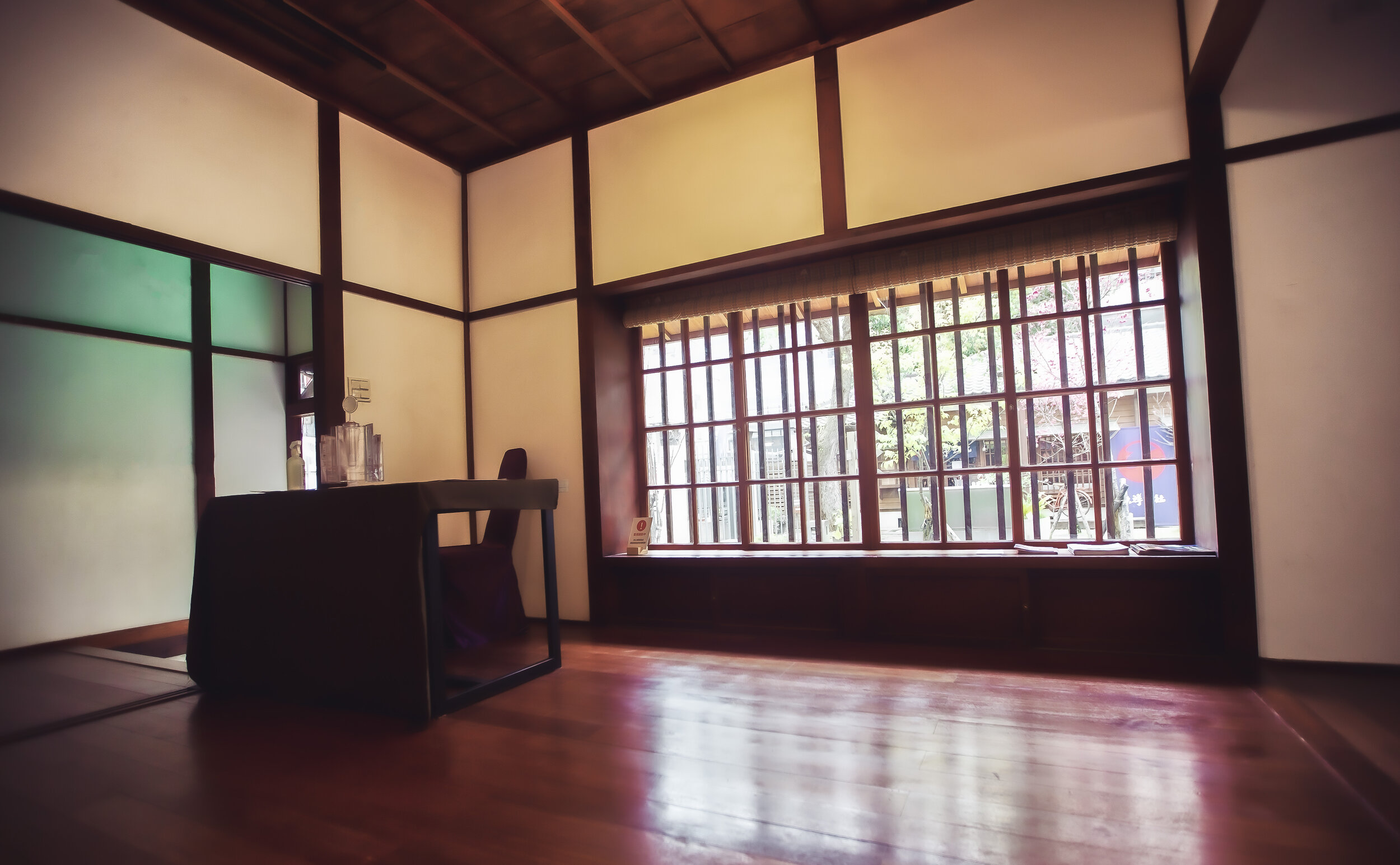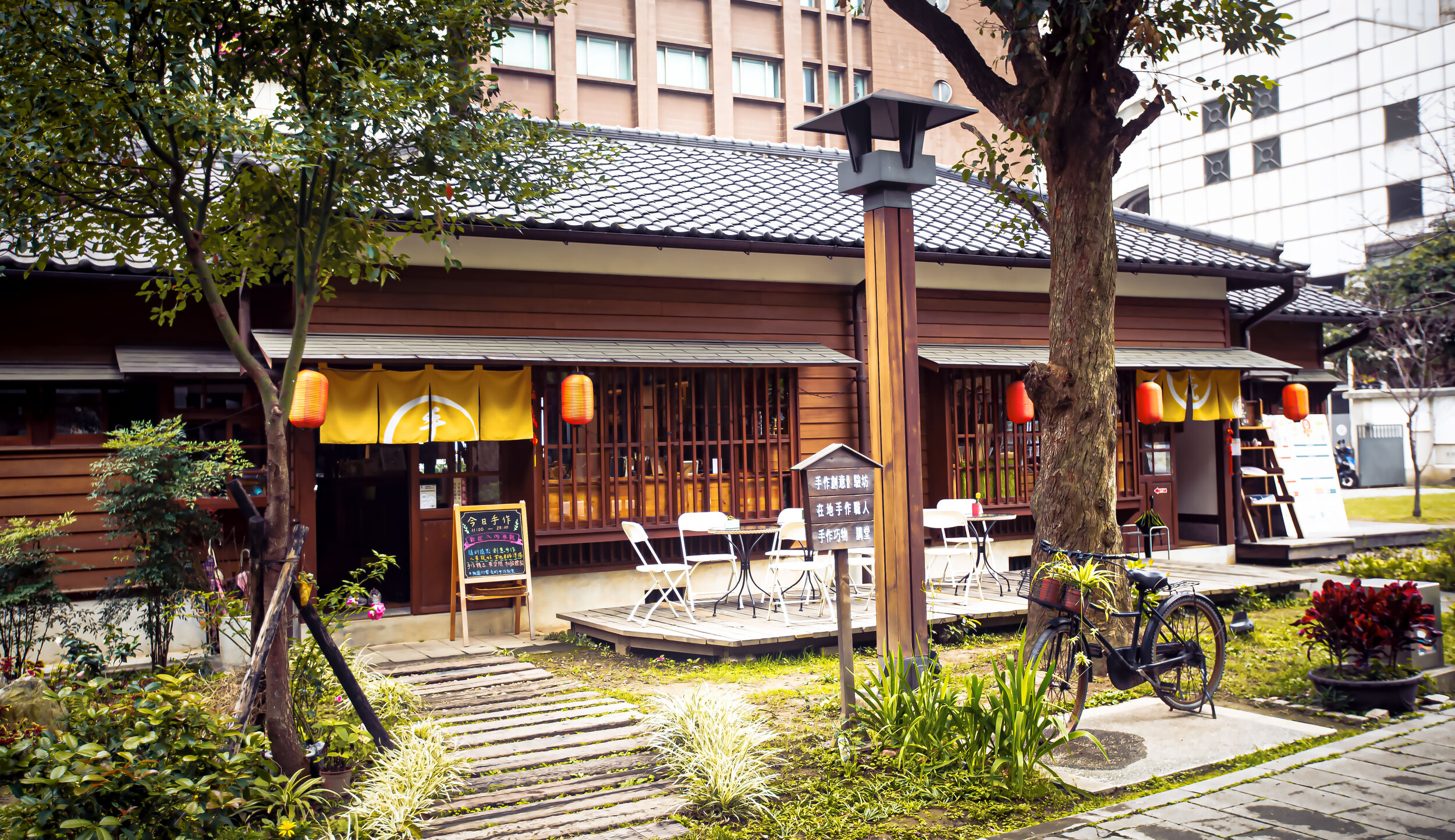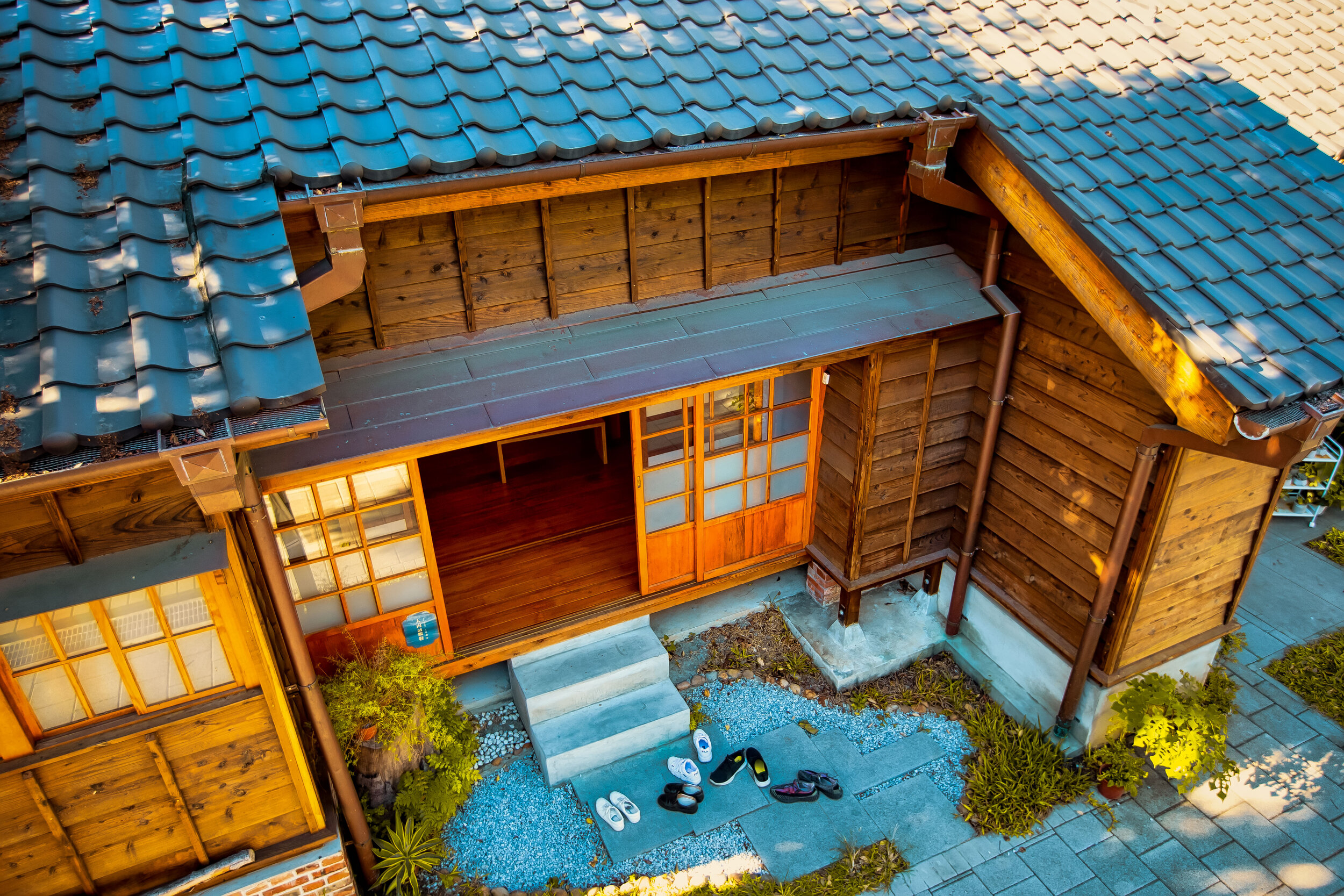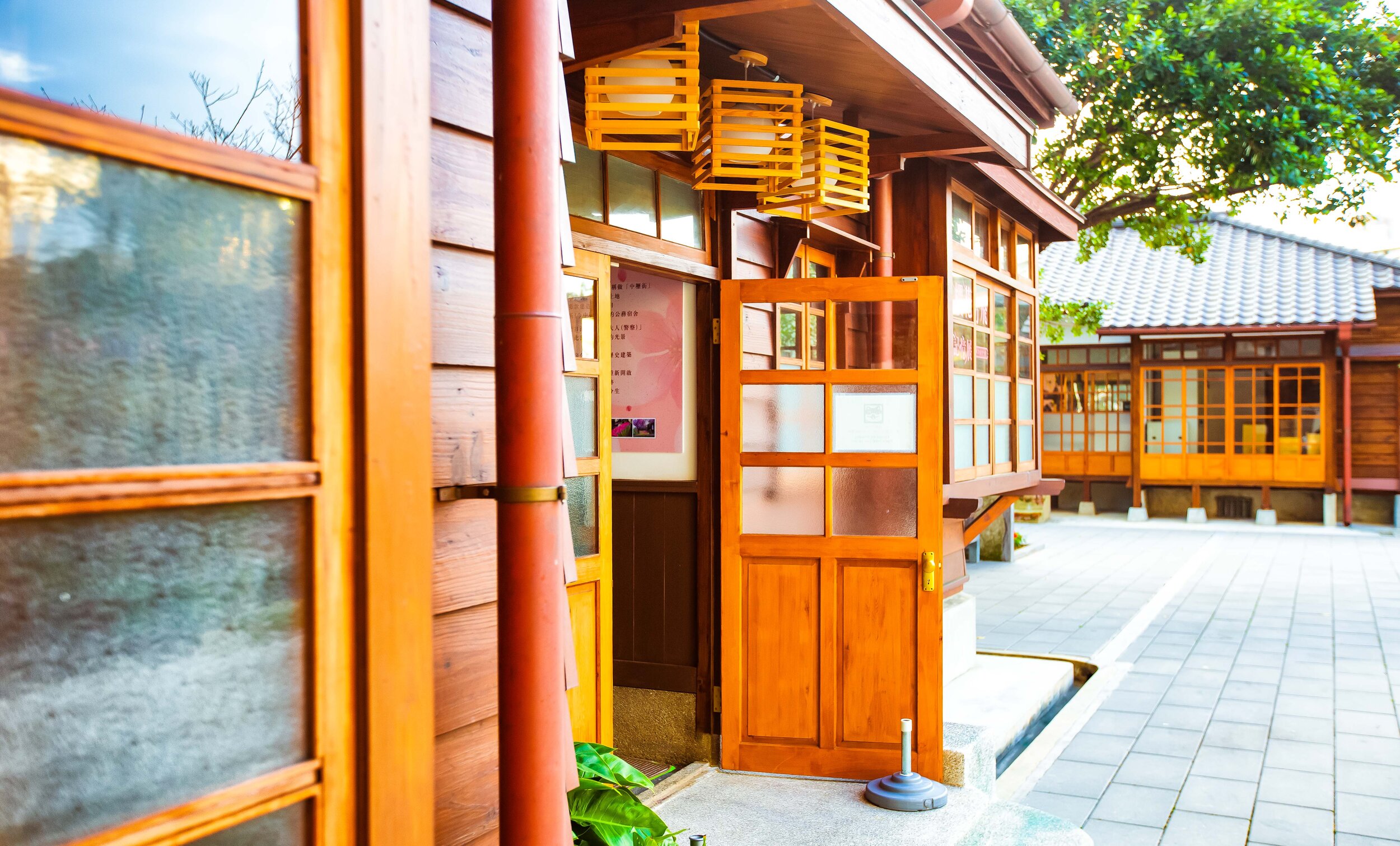When I first came to Taiwan, I took a job that required splitting time between Zhongli and Taoyuan, which unfortunately required traveling back and forth, and a lot of stress - because you know, Taiwanese traffic.
Obviously, this was before I knew very much about the country, so like any fresh-of-the-boat foreigner, I like to think that I should be excused for not noticing every little thing that crossed my path. Obviously, as the years went by, I learned more and more about my new home, and my explorations started to become a bit more adventurous compared when I had first arrived.
One of those adventures fortunately included a visit to the Zhongli Police Dorms to check out their original abandoned condition, prior to restoration. In retrospect, even though I probably walked past the Taoyuan Police Dorms hundreds of times during my first year in Taiwan, I didn’t really know what kind of treasure was hidden behind the gates to the community, so I never had a chance to enjoy them in their original condition.
Fast forward more than a decade and the historic dorms, like their counterparts here in Zhongli, have been completely restored and re-opened as a culture park for all to enjoy!
I’m still a bit sour about it all though. I could have been exploring these dorms a long time ago!
Today, the Taoyuan Police Dorms have been given a fresh look on life and have become one of downtown Taoyuan’s most important tourist attractions, especially with young people who are able to enjoy the beautiful park in any number of ways!
As always, before I talk about the culture park, let me first introduce a little bit about the history of the dorms and the area where they’re located!
Taoyuan Police Dormitories (桃園警察局日式宿舍群)
Having recently celebrated their centennial, the Japanese-era Taoyuan Police Dormitories have been brought back to life by the Taoyuan City Government as a newly re-opened cultural park.
Dating back to 1920 (大正9年), the dorms were constructed in the same year that Taoyuan’s administrative status was officially upgraded into a “town” (街). Known back then as Tōengai (桃園街 / とうえんがい), the town was the largest settlements within Shinchiku Prefecture’s (新竹州 /しんちくしゅう) Tōen District (桃園郡/とうえんぐん) which encompassed much of what we know today as Luzhu (蘆竹區), Dayuan (大園區), Guishan (龜山區) and Bade (八德區).
As the largest ‘town’ in the district, Tōengai was an economically prosperous area and was responsible for almost seventy percent of Taiwan’s tea production at the time, and was also one of the major competitors to Yingge (鶯歌), for the production of ceramics and pottery.
Developing outward from the Taoyuan Railway Station, “Tōengai,” or the area we know today as downtown Taoyuan, was home to a considerable amount of administrative and economic infrastructure near where the dorms are located. Within the area between the dorms and the railway station you would have found the District Assembly Hall (桃園郡役所), Town Assembly Hall (桃園街役場), Post Office (桃園郵便局), Taiwan Bank (臺灣銀行), Police Station (桃園郡警察課), Public Schools (公學校), and a Martial Arts Hall (桃園武德殿), among others.
Links: Daxi Martial Arts Hall (大溪武德殿) | Longtan Martial Arts Hall (龍潭武德殿)
Knowing what I do about the Japanese administration of the time, this tells me that the Taoyuan Police Dorms most certainly wouldn’t have been the only civil servant dormitories constructed in the area. There would have also been several clusters of civil servant, teachers and martial arts dorms nearby.
Unfortunately many of the buildings mentioned above have already been torn down and with them the dorms that would have housed their employees (for the most part) have gone with them. This means that the police dorms are currently one of the only remaining clusters of Japanese-era dorms from that era of Taoyuan’s history.
Historic records about the dorms are hit and miss, but what we do know is that after the colonial era ended they consisted of #5, 7, 9, 11, 12, 14, 16, 18, 20 and 22 on Lane 77 of Zhongzheng Road (中正路77巷).
If you’re counting that’s ten, which if you divide by two means there were originally five dorms.
Today however, there are only four remaining, meaning that one of them was probably damaged beyond repair and either collapsed or was torn down long before restoration.
If we take into consideration that there are currently four “Family-style Shared Dormitories,” and one large open space where the current ‘Prayer Pavilion’ and Public Washrooms are located, its fairly obvious where the dorm was originally located.
Now more than a century old, the four dorms that continue to exist at the park have been completely restored and re-opened as a culture park.
From 1920 - 1945, the dorms were occupied by members of the police force who were working at the Taoyuan Police Station (桃園郡警察課), and included space for their families.
When the Second World War ended and the Japanese left Taiwan, the dorms continued to be occupied by members of the police force, but this time it was members of the Republic of China Police.
That being said, as was the case with many of these Japanese-era buildings, as they aged and people moved out, they were abandoned, fell into a state of disrepair, and eventually became an eyesore within the downtown core of Taoyuan.
As mentioned above, when it comes to the design of the dorms, unlike other culture parks where Japanese-era dorms have been restored, there isn’t much of a variation in their design. The four dorms remaining today are all split in half, comparable to a duplex back in North America.
The official name for buildings like this is ‘Family-Style Shared Dorms’, but literally translates as Two-sided-Two-Household Dorm (雙併二戶建宿舍) in Chinese.
As is the case with these style of dorms, they were always split in half and two families shared the building. When the colonial era ended, this didn’t always remain the case as the buildings were slightly altered in their interior design with people tearing down some of the walls to make for more space, especially those with larger families.
Its important to note that these Japanese-style dormitories follow a basic design rule in that each of them, no matter if they’re a single or a shared dwelling, must consist of the following three spaces: A living space (起居空間), a service space (服務空間) and a passage space (通行空間).
The “living space” is considerably different than what we’re used to in western standards as what we might consider a “living room” is actually a brilliant multi-functional space where the residents could receive guests, hang out, have their meals, drink tea and sleep.
This space is usually the largest part of these dorms and features tokonoma (床の間/とこのま) or large compartments (like a closet) with sliding doors in the walls where blankets, decorations and other necessities are stored during the day.
Link: Tokonoma (Wiki)
The “service space” on the other hand could include a number of rooms, which in the double family dorms might be shared spaces between both sides in order to save space. Service spaces typically include the kitchen (台所 / だいどころ), bathroom (風呂 / ふろ), washroom (便所 / べんじょ), etc.
Finally, the “passage space” in each of these dorms varies, but generally means the front and back entrances to the dorm as well as the corridors within, between the living space and the service space.
Each of the dorms have been constructed using the irimoya-zukuri (入母屋造) style of design, which basically means that the base of the building is smaller than the roof, the weight of which is supported by a network of trusses (屋架) in the ceiling that helps to support the weight of the four-sided sloped hip roof (四坡頂).
The roof that you’ll find on these buildings however don’t eclipse the size of the building in the same way that the elaborate roofs on shrines and temples do. One final thing to take note of with the roofs of the dorms is that when they were restored, the original tiles were replaced with plastic-looking black tiles, helping to keep cost down.
Similarly, the wooden shitamiita (下見版 / したみいた) siding on the buildings has been completely replaced. The siding is still too new and is quite dark in colour, but as they age the colours will fade and they’ll look more like what you’d expect from a Japanese building of this kind.
Finally, one of the most significant design features of these buildings, and (as far as I’m concerned) are the stands-outs for me at this culture park are the beautiful ‘engawa’ (緣側/えんがわ) sliding door verandas on the buildings.
Located at the rear side of each of the dorms, the sliding doors allow for natural air to enter the buildings, while also offering access to the areas where the gardens (and outhouses) would have been located.
Link: Engawa (Wiki)
Unfortunately some of them are covered up with curtains at certain times of the day which takes away from their beauty. They are nevertheless one of the most architecturally significant aspects of the dorms that remain today.
Now let’s talk about the the culture park!
Taoyuan 77 Art Zone (桃園77藝文町)
In an attempt to attract interest to the newly restored culture park, the Taoyuan City Government’s Department of Cultural Affairs held a naming contest for the park in late 2017, prior to its official re-opening.
After careful consideration of all of the submissions, they eventually went with Taoyuan 77 Artzone (桃園77藝文町), which probably sounds a bit strange to most English speakers.
In Chinese however, the name does hold special meaning as I’ll break down below:
“桃園” (Taoyuan) - This one should be obvious!
“77” - The number referring to the lane where the dorms are located.
“藝文” - (Art) a common word used to refer to these cultural parks (藝文區).
“町” - (block) a word that is predominately used in Japanese (町/まち) to describe a ‘block’ or ‘neighbourhood’ with the best famous example being Taipei’s “Ximending” (西門町).
Considering Taoyuan has an area that we already refer to as the “Taoyuan Art District” (桃園藝文區), in order to save some confusion, instead of making use of the word “area” (區), they went with a character that is more commonly used in Japan, which in turn helps to identify that the culture park has Japanese-era buildings.
When the park officially opened to the public in 2018, it quickly became a pretty popular location in downtown Taoyuan as it featured a coffee shop, a couple of restaurants and outside seating for anyone working in the area and wanting to enjoy their lunch outside.
As a culture park, the space is used in a variety of ways that includes reserving space to educate people on the history of the dorms in addition to offering space for local musicians and artists to perform.
It also provides space for weekend markets and food stalls where people can come and enjoy local culture.
As I outlined in a previous post, there is an aspect to this park that helps to ensure that traffic is constantly being driven through the doors. The dorms that have been restored and re-opened to the public have space reserved for historic purpose, but a couple of them have been reserved as space for private businesses to set up shop.
The Taoyuan City Government registered the dormitories as Protected Historic Buildings (歷史建築) in August of 2013 (民國102年), and shortly thereafter plans were made to restore the buildings and open them up to the public. From their designation as historic properties to the completion of the restoration project, the cultural affairs bureau had an ample amount of time to come up with ideas with regard to the best usage of these spaces. With so much investment in the opening of ‘culture parks’ around Taoyuan though, it is understandable that the government had trouble coming up with ideas on how to fill the space properly.
So, in a case similar to the historic police and teachers dorms in neighbouring Zhongli, the government made use of existing ‘operate transfer’ laws to seek out the participation of the private sector by opening up bids that would make the space available for the short-term rental of the dorms for private purposes.
These public-private participation partnerships are something that you’ll find is taking place all over Taiwan and has become quite instrumental when it comes to the preservation of historic properties.
If you’d like to learn more about how these partnerships are used to help conserve historic buildings in Taiwan, check out the link below:
Link: The Role Of Public-Private Partnerships In Conserving Historic Buildings In Taiwan
Taking into consideration that most of these partnerships expire after a term of five years, as I’m writing this article, some of the businesses that have opened up shop within the park have already reached the halfway point of their rental agreement. I can’t speak as to whether any of them will renegotiate their rental agreements when their contracts are up, so I won’t talk too much about what you’ll find inside, but I’ll give them a quick mention.
ComeTrue Coffee (成真咖啡)
Seafood Club Japanese Cuisine (魚鮮會社)
77 Craft Studio + Gift Shop (手作創意體驗坊/小賣文創商店)
I suppose the standout of the bunch is ComeTrue Coffee, which is a pretty popular spot with tourists and locals alike. There’s something about being able to sit in one of these beautiful buildings and enjoying coffee, tea and dessert that attracts a lot of people.
If you’d like to go, I recommend calling ahead to make a reservation or getting your name on the waiting list as soon as you show up at the park. Getting a seat can be a little difficult!
Given that the park is home to four dormitories and three of them are occupied by private businesses, the one you’ll want to pay attention to if you’re interested in learning about history is the largest of them, named the “Six Arts Exhibition Space” (六藝展覽坊).
There are three exhibition spaces within with one of the spaces acting as permanent exhibition about the history of the dorms with original pieces of the buildings that have been preserved in addition to other interesting historic information about the buildings and the development of Taoyuan during the colonial era.
There is a strange, yet somewhat practical addition to the park in the form of a pavilion known as the “Make a Wish Pavilion” (祈福亭), where you’ll find traditional Japanese wooden ema (絵馬) fastened to the back. The strange thing about this is that in Japan, these wooden ema plaques are typically only found at Buddhist temples or Shinto Shrines.
In Japan, prayers and wishes are written on the wooden plaques and are then left hanging up at the shrine where the spirits or gods can see them.
Link: Ema (Shinto)
The obvious question one might have if you’re familiar with these things is why you’ll find ema hanging at this culture park. I guess the best way to explain this is that here in Taiwan, these wooden plaques are often easily identifiable as “Japanese” culturally-speaking. So, when you travel around Taiwan and you encounter something Japanese, you’ll sometimes find that space is offered for hanging these plaques.
Practically speaking, the pavilion is functional in that it cleverly hides the public washrooms that have been constructed to its rear. In this way you have an attractive pavilion, which is pretty much Instagram gold and also obscures an addition to the park that would take away from the ambiance, if it weren’t there.
One of the great things about this little park is that you can enjoy the beauty of the four dorms while also learning about their history, enjoying some coffee, making crafts or attending the various activities and events that they have planned. There’s always something to do when you visit, which should make you want to stop by whenever you’re in the area to see what’s going on!
Getting There
Address: #5, Lane 77 Zhongzheng Road, Taoyuan District (桃園市桃園區中正路77巷5號)
GPS: 24.991770 121.311750
The Taoyuan Police Dorms, otherwise known as the Taoyuan 77 Art Zone is located within the downtown core of Taoyuan District and is a short walk away from the Taoyuan Railway Station. With that in mind, if you plan on visiting and you’re coming from outside of Taoyuan, I highly recommend just taking the train and walking.
Train
If you take a train to Taoyuan Railway Station (桃園火車站), it doesn’t matter if you’re coming from the north or the south, you can hop on any of Taiwan’s trains, express or not and they’ll all stop at the station.
From the front of the station (前站), you’ll simply walk down Zhongzheng Road passing by the Tonlin Department Store (統領百貨) and turning left down Lane 77 (中正路77巷), which is located just past the large Land Bank of Taiwan (台灣土地銀行桃園分行). Lane 77, which is pretty much the namesake for the culture park is a narrow one, but don’t worry too much, you’ll find the entrance to the park quite quickly.
Car/Scooter
If you are driving a car or a scooter, getting to the dorms should be pretty easy, but parking on the other hand is completely different story. Simply input the address into your GPS or Google Maps and you’ll find yourself at the front entrance to the park in no time.
If you’re driving a car, you’re going to have to look around to find some parking and even if you’re lucky enough to find a spot on the street, you’re still going to have to pay. There are a number of parking lots in the area, but getting a spot tends to be quite competitive, especially on weekends, so you may find yourself waiting in line for quite a while to get a spot.
Nearby Parking lots:
文昌公園 公有地下停車場 (40NT/hour)
新民機械立體停車場 (30NT/hour)
大林路停車場 (50-60NT)
嘟嘟房 (40NT/hour)
Times平面停車場 (70-100NT/hour)
Similarly, there is an ample amount of parking spaces on the street available for scooters near the park.
That being said, they’re usually full most of the time and you might have to circle around for quite a while before you find a spot. If you are driving a scooter, you need to make sure you don’t park illegally as the authorities in downtown Taoyuan are quick to issue fines or have the tow truck come to take your scooter away.
While you’re in the area, I highly recommend checking out the nearby Jingfu Temple (景福宮), which is known locally as Taoyuan’s Big Temple (桃園大廟) and the newly opened Japanese-era Taoyuan Kendo Museum (桃園劍道故事館) next door. Likewise you could also check out the Taoyuan Night market (桃園夜市) or hop on a bus or Youbike and head over the Tiger Head Mountain (虎頭山) to check out the Taoyuan Confucius Temple (桃園孔廟) or the Taoyuan Shinto Shrine (桃園神社), all of which are within walking distance from the railway station.
The ‘Taoyuan 77 Artzone’ can be a pretty busy spot and the coffee shop within is usually packed with visitors, so if you’re planning a visit on the weekend, remember to head over a bit early so that you can better enjoy the beautiful little park within the busy city.
Hours: Tuesday - Sunday from 11:00am - 9:00pm (Closed on Mondays and National Holidays)
Website: Taoyuan 77 Art Zone (桃園77藝文町)
ComeTrue Coffee (成真咖啡): Monday - Friday from 10:00 - 9:00 (Weekends: 9:30 - 9:00)
References
桃園77藝文町 (桃園觀光導覽網)
桃園警察局日式宿舍群 (桃園市政府文化局)
桃園77藝文町 (Wiki)
桃園77藝文町。桃園警察局日式宿舍群歷史建築。重修後活化為文創園區 (1817BOX)
桃園警察局日式宿舍群 (文化局)











































































